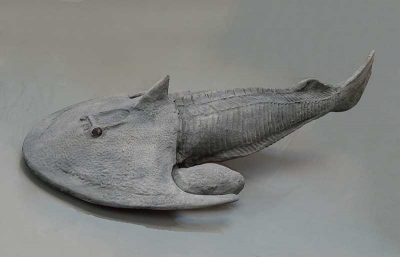
The period is named after Devon, a county in southwestern England, where a controversial argument in the 1830s over the age and structure of the rocks found distributed throughout the county was eventually resolved by the definition of the Devonian period in the geological timescale.
A fossil creature from the Devonian discovered more recently has been hailed as a vital link between fish and the first vertebrates to walk on land. Found in the Canadian Arctic in 2004, Tiktaalik had a crocodile-like head and strong, bony fins that scientists think it used like legs to move in shallow waters or even on land. The fish showed other characteristics of terrestrial animals, including ribs, a neck, and nostrils on its snout for breathing air.
Plants began spreading beyond the wetlands during the Devonian, with new types developing that could survive on dry land. Toward the end of the Devonian the first forests arose as stemmed plants evolved strong, woody structures capable of supporting raised branches and leaves. Some Devonian trees are known to have grown 100 feet (30 meters) tall. By the end of the period the first ferns, horsetails, and seed plants had also appeared.
Picture Credit : Google

